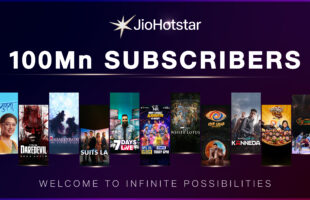For broadcasters
From 2D to 3D to 4K and Ultra-HDTV, industry experts are suggesting that with today’s digital HDTV now an established transmission standard, and with recent development work on signal compression, the industry must now prepare for Television’s Next Revolution. Super high-quality Ultra-HDTV displays are now rolling off the production line, and although they are still expensive for mass-market adoption, prices will soon start falling. Hear from the broadcasters who are already preparing suitable content, and readying their material for 4K (3840 x 2160 pixels) transmission.
For technologists – hands on advice from 4K practitioners
Learn where we are today in terms of Ultra-HDTV. Industry experts will guide delegates through the “acronym soup” of technologies in order to prepare for the spectacular changes ahead, and why it makes commercial sense to start creating 4K material today for tomorrow’s developments.
TV ASIA Plus speaks to Ted Baracos, Director of Market Development – Reed MIDEM TV Division, to find out more about the 4K focus at this year’s MIPTV.
Q: Why did MIPTV feel it timely to introduce a conference track on 4K Ultra HD?
A: The investment cycle for 4K broadcast transmission has already begun. The first demo-channel is already transmitting on satellite, and others are expected this year. Indeed, if the Consumer Electronics industry is to be believed, 2013 is already very much ‘the year of 4K’. (4K TV sets were the star attraction at the CES last month in Las Vegas.) Research from any number of industry experts suggests that while this view might be a little premature, everyone in the 4K value chain admits that the missing link is suitable content. Fresh data from Deloitte’s Technology, Media & Telecoms division states clearly that “2013 will [see] the roll-out of the next generation of HDTV”.
Broadcasters will require new studios and equipment, and consumers will need new TV sets and personal video recorders. Deloitte adds that, because of a shortage of content, most early 4K viewing will be of pre-recorded material dominated by movies. This is the main reason why MIPTV felt it timely to introduce a focus on 4K – particularly matched to MIPTV’s 50th anniversary tagline, “Screening the future”.
Q: Who are the speakers and can you share some preliminary information on the topics that will be showcased?
A: IHS-Screen Digest will deliver its latest analysis and forecasts for the take-up of 4K displays. There will be 4K screenings (Sony 84” 4K Bravia TV set) in the MIPCube Square (an innovation zone inside the MIPTV exhibition), and full screen 4K projection during the 4K Super Sessions taking place on Wednesday April 10.
Expert panels will talk about their own expectations for the roll-out of 4K. Sky Deutschland’s Gary Davey will update delegates as to its plans. The head of the BBC’s Natural History Unit, Mike Gunton, will explain why the BBC is already shooting in 4K.
Sky, both in the UK and Germany, have already shot soccer test-footage in 4K. Berti Kropac from Kropac Media, which shot the German tests and already has an impressive 4K production portfolio under its belt, will also speak. Same with Barry Bassett, MD at London’s VMI. Other speakers are drawn from 3net, Ateme and the EBU.
Q: What about Stereoscopic 3D? Why the decision to pull this track out of MIPTV?
A: 3D TV has been a feature of the MIPTV and MIPCOM conference for the last 2 years, including matchmaking between channels and 3D content producers. 3D as a genre is now established in the global market place and without anything substantially new to cover in 3D since last October, we felt that MIPTV audiences would want to be among the first in the world to understand and discover the potential for ultra high definition television. We are also fortunate that Sony Corporation, a loyal partner of past 3D tracks, is able to supply its new, fourth-generation digital cinema 4K projection system so that the 4K conferences at MIPTV 2013 will offer a true 4K entertainment experience.








